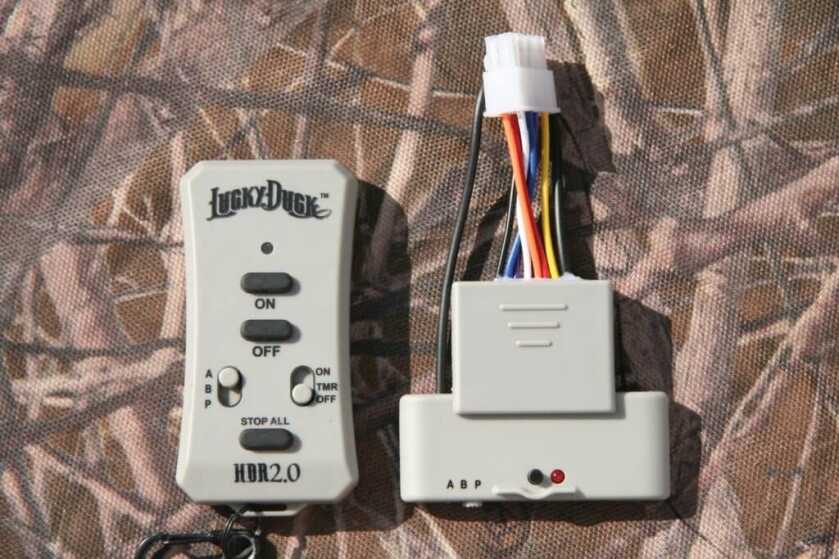
Technology enhances our waterfowl hunting. Every new item that comes out does so with that in mind. Lucky Duck continues this idea with the introduction of their HD 2.0 Remote following the earlier release of the HD remote. The two are compatible in that they can operate Lucky Duck’s HD receivers, but the new 2.0’s offer multiple channels.
I did a previous article here on remotes last January, but at the time the new 2.0 version was not available. Now we have some incredible options. First, the new remote will indeed operate all your older Lucky Duck receivers (only using one channel). You still have the option of an on/off and an intermittent timer. The newest version however takes all this several steps further.
The 2.0 version operates with three independent channels, is water-resistant, has a much faster sync program capability, and has an all-stop button to quiet all motion at once. So with one remote you can operate and control different decoying features or control the same decoy with different remotes (different channels). On one channel you can run an agitator, on another a spinner, and on another a surface motion decoy. Here are examples of each:
- Lucky Duck HD Agitator
- Lucky Duck HDI Waterproof Spinner
- Lucky Duck HD Floater
- Flocker 2.0 Rotary Machine
Programming in the new 2.0 is simplified across channels A and B. All you have to do is set your receiver to match channels A and B and they are synchronized automatically. You can add as many motion decoys to your spread as you like. Programming is so easy, but note a 2.0 receiver is required for all decoys synching to your new 2.0 transmitters.
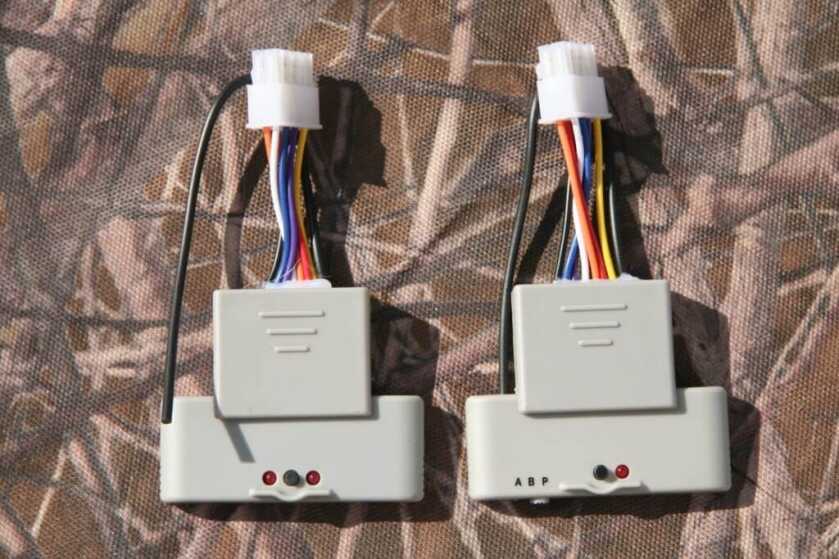
The third channel “P” is a variable channel using the older synchronizing technology as the former version of the remotes. The design purpose is to ensure no cross-interference from other transmitters that might be operating in the area. Because this method uses a randomly generated code, no two transmitters can be on the same channel. This still allows additional receivers with motion decoys to be synchronized to that channel. To sync the decoys you will:
1. Slide the channel selector switch to P on the receiver and transmitter.
2. Turn the decoy on. The motor shaft should be spinning.
3. Press and hold the black sync button on the receiver. The light on the receiver will turn on and the motor will stop.
4. While pressing the black sync button on the receiver, press and hold the “On” button on the remote transmitter. The light on the transmitter should turn on. Release both buttons. The transmitter and receiver are now programmed. To test programming, press the “On” button on the transmitter. The motor should spin.
There is a difference between how the 2.0 HD remote and older remotes operate decoys. The newer 2.0 have the ability to allow multiple transmitters to operate the same decoys, while older versions allow only one remote to operate decoys. The benefit here is other hunters in your group can control the decoys. It puts multiple eyes and responses to the decoy action. Inevitably, some may or may not see birds giving others the option of controlling motion across the entire spread, or you can have a separate person control only spinners, while another controls flappers or even agitators.
Finally, the older version of receivers will have to be manually synchronized to transmitter channels A, B, and P while older transmitters will only sync to channel “P”.
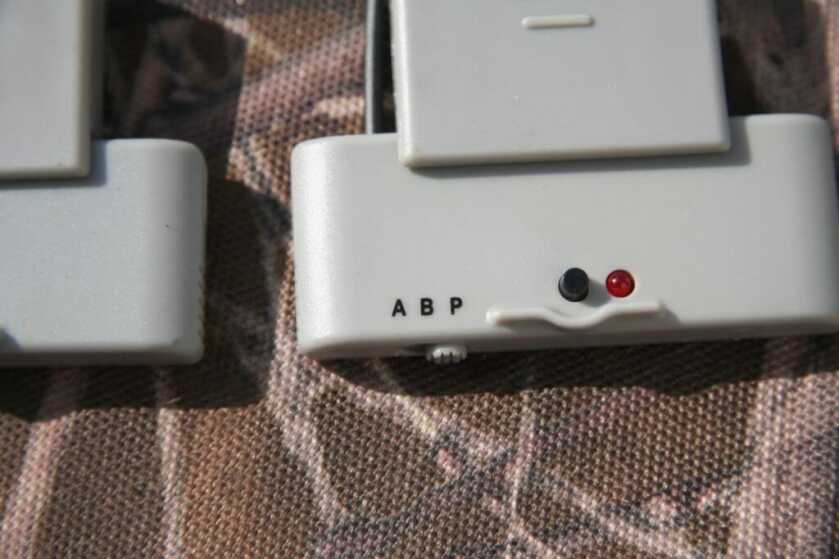
Previous versions of the transmitters did not include an on/off switch. This was later included and now in the 2.0 version, it is integrated with the intermittent timer switch.
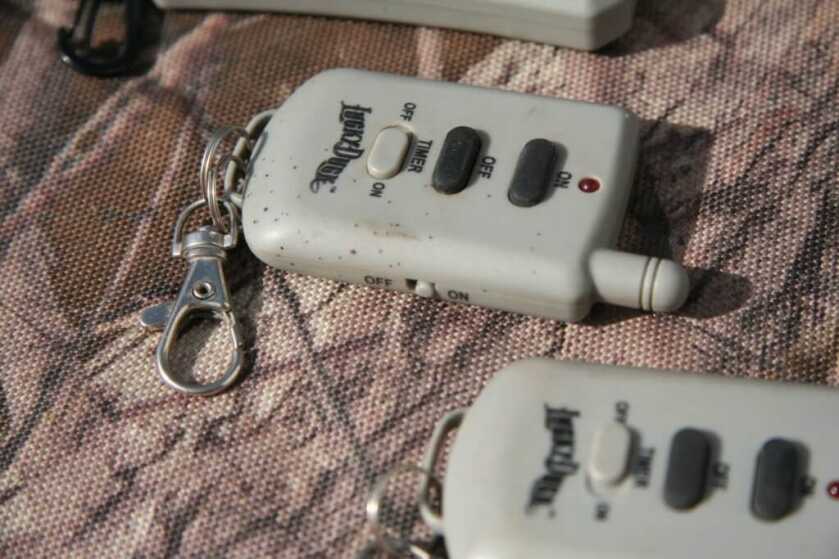
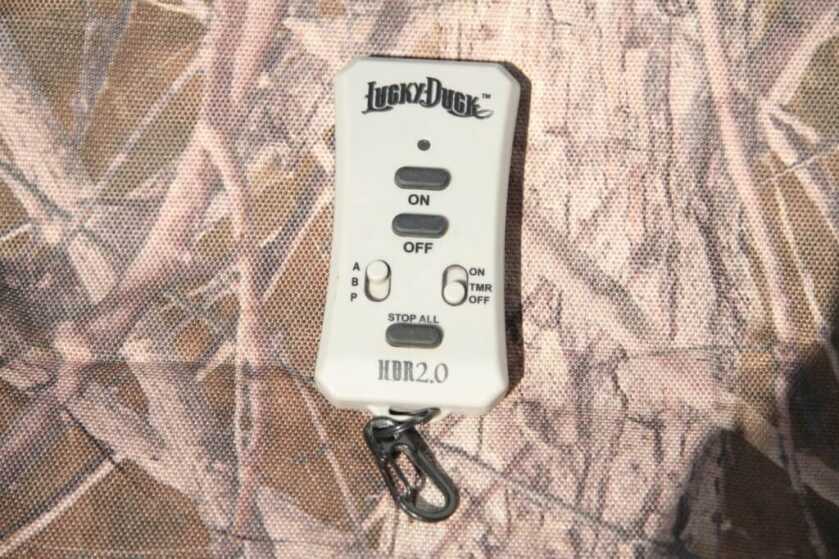
The overall versatility of having multiple decoys on one remote is enhanced by its 300’ range and wide spectrum of frequencies operating the transmitter and remote. In effect not much chance of crossing over channels with others in the marsh. I have discussed how motion works, but having a 300’ range allows hunters to use the motion to not only draw in ducks but also to re-route and deflect ducks to your spread.
It is also important to note that even though three channels exist that does not mean only three decoys can be synchronized. A large group of agitators in the spread all on one channel while another group of spinners can be on another channel.
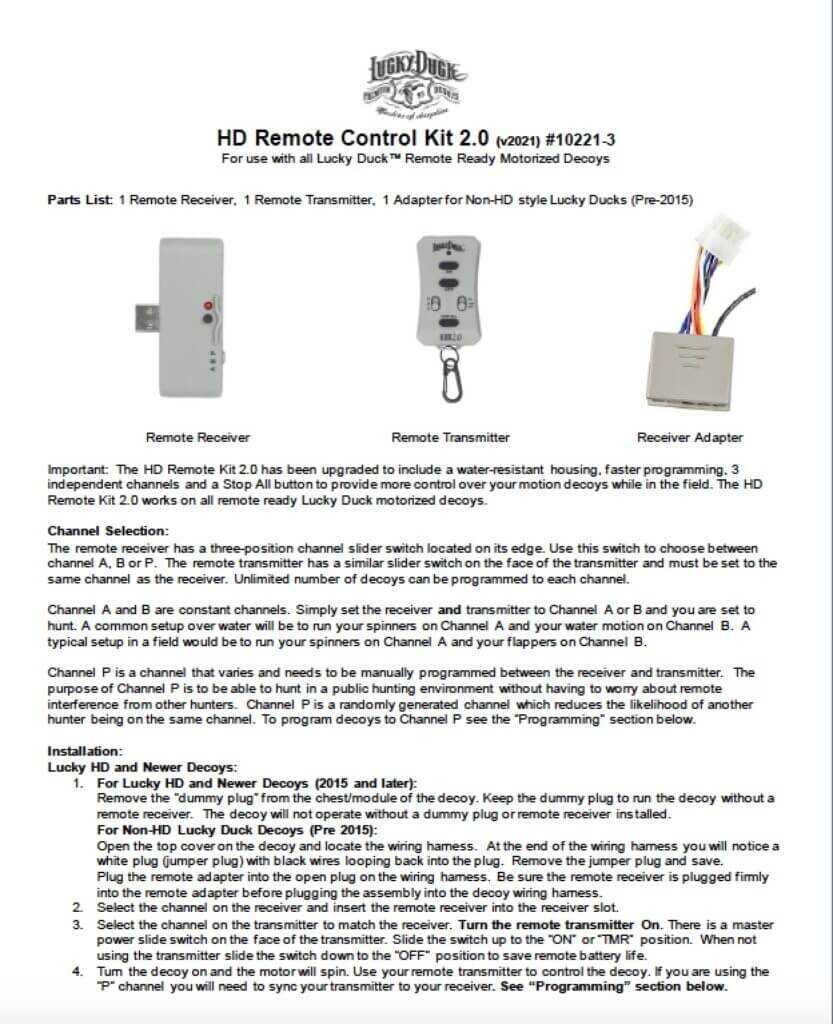
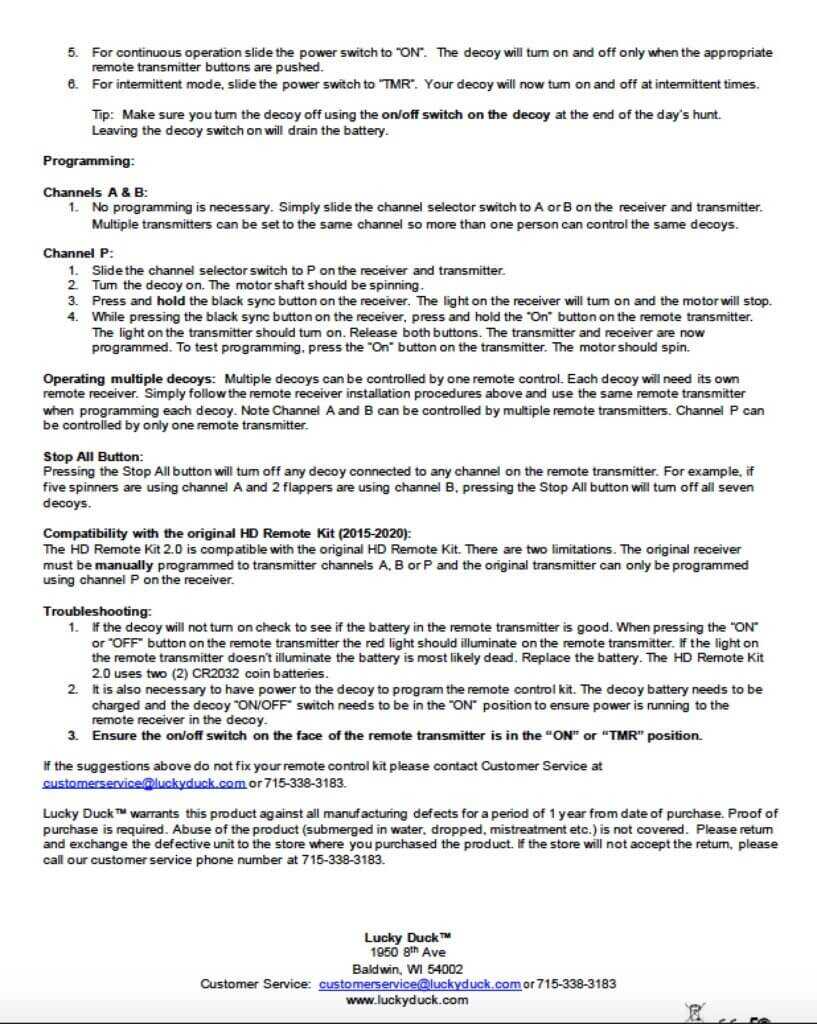
*** Buy and Sell on GunsAmerica! ***

